Life 121 Exam 3
5.0(2)
5.0(2)
Card Sorting
1/72
Study Analytics
Name | Mastery | Learn | Test | Matching | Spaced | Call with Kai |
|---|
No study sessions yet.
73 Terms
1
New cards
Unlike other animals, sponges __________.
* Lack true tissues and organs
* Lack a coelom
* are unicellular
* are bilateral
* possess cell walls
* Lack true tissues and organs
* Lack a coelom
* are unicellular
* are bilateral
* possess cell walls
Lack true tissues
\
Sponges diverged from the other animals early in their history
\
Sponges diverged from the other animals early in their history
2
New cards
Sponges feed by ___
* filtering small particles from water
* absorbing nutrients from the guts of their hosts
* paralyzing small crustaceans with stinging cells
* scraping bacteria and algae from hard substrates
* performing photosynthesis
* filtering small particles from water
* absorbing nutrients from the guts of their hosts
* paralyzing small crustaceans with stinging cells
* scraping bacteria and algae from hard substrates
* performing photosynthesis
filtering small particles from water
\
Sponges trap food from the water circulating through their porous bodies
\
Sponges trap food from the water circulating through their porous bodies
3
New cards
Symmetry is one of the most basic characteristics of animals. The group that has a different symmetry from the other four groups listed here is the _____.
* jellies
* chordates
* mollusks
* arthropods
* annelids
* jellies
* chordates
* mollusks
* arthropods
* annelids
jellies
\
Individuals in the phylum Cnidaria represent an early branch of the animal kingdom. The other groups mentioned in this question exhibit bilateral symmetry, but jellies exhibit radial symmetry
\
Individuals in the phylum Cnidaria represent an early branch of the animal kingdom. The other groups mentioned in this question exhibit bilateral symmetry, but jellies exhibit radial symmetry
4
New cards
All animals with bilateral symmetry have ___ germ layers
* 0
* 1
* 2
* 3
* 4
* 0
* 1
* 2
* 3
* 4
3
All bilaterally symmetrical animals have three germ layers
All bilaterally symmetrical animals have three germ layers
5
New cards
A ____ is a chordate but not a vertebrate
* lamprey
* lancelet
* frog
* shark
* sea star
* lamprey
* lancelet
* frog
* shark
* sea star
lancelet
\
Lancelets are cephalochordates and retain their notochord as adults
\
Lancelets are cephalochordates and retain their notochord as adults
6
New cards
A lamprey, a shark, a lizard, and a rabbit share all of these characteristics except ____.
* pharyngeal slits in the embryo
* vertebrae
* a dorsal, hollow nerve cord
* hinged jaws
* all of the the choices are correct
* pharyngeal slits in the embryo
* vertebrae
* a dorsal, hollow nerve cord
* hinged jaws
* all of the the choices are correct
hinged jaws
\
The lamprey is jawless
\
The lamprey is jawless
7
New cards
Which set of animals only contain gnathostomes?
* rays, turtles, pigeons, and tuna
* sharks, hagfish, and whales
* hagfish, bass, sharks, and frogs
* lampreys, conodonts, and hagfish
* conodonts, placoderms, and acanthodians
* rays, turtles, pigeons, and tuna
* sharks, hagfish, and whales
* hagfish, bass, sharks, and frogs
* lampreys, conodonts, and hagfish
* conodonts, placoderms, and acanthodians
rays, turtles, pigeons, and tuna
\
Gnathostomes are diverse
\
Gnathostomes are diverse
8
New cards
The majority of animal species are___.
* acoelomates
* annelids
* nematodes
* vertebrates
* insects
* acoelomates
* annelids
* nematodes
* vertebrates
* insects
insects
\
In species diversity, insects outnumber all other forms of life combined
\
In species diversity, insects outnumber all other forms of life combined
9
New cards
Which animal is an amphibian?
* caecilian
* lizard
* turtle
* all of these
* none
* caecilian
* lizard
* turtle
* all of these
* none
caecilian
\
They are legless amphibians, often mistook for snakes.
\
They are legless amphibians, often mistook for snakes.
10
New cards
The adaptation that freed vertebrates from water for reproduction and allowed them to radiate into diverse terrestrial environments was the ___.
* Placenta
* hair
* endoderm
* bony appendage
* amniotic egg
* Placenta
* hair
* endoderm
* bony appendage
* amniotic egg
amniotic egg
\
The amniotic egg allows for reproduction and development within a structure that provides moisture, food, waste storage, and gas exchange
\
The amniotic egg allows for reproduction and development within a structure that provides moisture, food, waste storage, and gas exchange
11
New cards
All mammals
* bear live young
* complete their embryonic development in the uterus
* nourish their offspring through mammary glands
* All of them
* None
* bear live young
* complete their embryonic development in the uterus
* nourish their offspring through mammary glands
* All of them
* None
Nourish their offspring through mammary glands
\
Mammary glands that produce milk are as distinctively mammalian as hair
\
Mammary glands that produce milk are as distinctively mammalian as hair
12
New cards
The opossum is an example of a(n) _____ mammal
* oviparous
* marsupial
* eutherian
* placental
* monotreme
* oviparous
* marsupial
* eutherian
* placental
* monotreme
marsupial
\
Opossums, like all marsupial mammals, keep their nursing young in an external pouch
\
Opossums, like all marsupial mammals, keep their nursing young in an external pouch
13
New cards
All of the following are characteristics of the body cavity except……
* Acts as a hydrostatic skeleton in soft-bodied animals
* Forms the gastrovascular cavity in cnidarians
* Cushions suspended organs, preventing internal injury
* A space lined by mesoderm in coelomates
* Allows internal organs to enlarge and move independently of outer body wall
* Acts as a hydrostatic skeleton in soft-bodied animals
* Forms the gastrovascular cavity in cnidarians
* Cushions suspended organs, preventing internal injury
* A space lined by mesoderm in coelomates
* Allows internal organs to enlarge and move independently of outer body wall
Forms the gastrovascular cavity in cnidarians
\
\
\
\
14
New cards
Which of the following is a false statement concerning the cuticle/exoskeleton of the ecdysozoans?
* decreases H2O loss
* increases H2O loss
* Provides protection and support for the organism
* Made of chitin
* decreases H2O loss
* increases H2O loss
* Provides protection and support for the organism
* Made of chitin
Increases water loss
15
New cards
Which of the following is not associated with all arthropods
* Triploblastic
* Molting
* Bilateral symmetry
* wings
* cuticle with chitin
* Triploblastic
* Molting
* Bilateral symmetry
* wings
* cuticle with chitin
Wings
16
New cards
Which of the following is not a derived trait of a chordate?
* Post-anal tail
* Vertebral column
* Dorsal, hollow nerve cord
* Pharyngeal slits
* Notochord
* Post-anal tail
* Vertebral column
* Dorsal, hollow nerve cord
* Pharyngeal slits
* Notochord
Vertebral column
17
New cards
Why is Tiktaalik not classified as a tetrapod?
* It had a neck
* It had limbs without digits
* Molecular evidence demonstrates it is a lobe-fin
* It had lungs
* It had an aquatic life-style
* It had a neck
* It had limbs without digits
* Molecular evidence demonstrates it is a lobe-fin
* It had lungs
* It had an aquatic life-style
It had limbs without digits
18
New cards
Which of the following is the largest extant (Living) dinosaur?
* Green anaconda
* Leatherback Sea turtle
* Saltwater Crocodile
* Ostrich
* Green anaconda
* Leatherback Sea turtle
* Saltwater Crocodile
* Ostrich
Ostrich
19
New cards
Which of the following is the least likely reason concerning the origin of feathers in dinos?
* To achieve flight
* To provide thermal regulation
* For display and mate selection
* To achieve flight
* To provide thermal regulation
* For display and mate selection
To achieve flight
20
New cards
There is evidence of Neanderthal ancestry in present-day Eurasian populations; providing evidence that as Homosapiens moved out of Africa and into Europe, there was admixing with Homoneanderthalensis
Which of the following is most correct?
* Reinforcement was the hybrid zone outcome
* Allelic variation in homo-sapiens decreased as a result
* Reproductive barriers were complete among the species
* Allopatric speciation drove the evolution of these two species
Which of the following is most correct?
* Reinforcement was the hybrid zone outcome
* Allelic variation in homo-sapiens decreased as a result
* Reproductive barriers were complete among the species
* Allopatric speciation drove the evolution of these two species
Allopatric speciation drove the evolution of these two species
21
New cards
The three Bilaterian clades are __________,__
* Deuterostomia, Ecdysozoa, Lophotrochozoa
* Deuterostomia, Amphibia, Actinopterygii
* Chordates, Mammalia, Gnathostomes
* Deuterostomia, Ecdysozoa, Lophotrochozoa
* Deuterostomia, Amphibia, Actinopterygii
* Chordates, Mammalia, Gnathostomes
* Deuterostomia
* Ecdysozoa
* Lophotrochozoa
* Ecdysozoa
* Lophotrochozoa
22
New cards
What is Deuterostomia
Deuterostomia is a taxonomic group of animals, including echinoderms, hemichordates, and chordates. They share a common embryonic development pattern where the first opening becomes the anus, and the second opening becomes the mouth.
23
New cards
echinoderms
A phylum of marine animals characterized by their radial symmetry, spiny skin, and water vascular system used for movement and respiration. Examples include starfish, sea urchins, and sea cucumbers.
24
New cards
A Starfish possess a ___ type of symmetry
* bilateral
* unilateral
* radial
* multilateral
* bilateral
* unilateral
* radial
* multilateral
radial
25
New cards
_, is a type of animal clade characterized by the presence of a lophophore ( a feeding structure). Examples are snails, clams, and some segmented worms
* Lophotrochozoa
* Gnathostomes
* Mammals
* Hexapods
\
\
* Lophotrochozoa
* Gnathostomes
* Mammals
* Hexapods
\
\
Lophotrochozoa
26
New cards
A snail has a feeding structure that is horseshoe-shaped and covered in cilia to help it catch particles of food.
What type of clade has this derived feature?
* Lophotrochozoa
* Cephalochordates
* Lobe-fin
* Urochordates
\
What type of clade has this derived feature?
* Lophotrochozoa
* Cephalochordates
* Lobe-fin
* Urochordates
\
Lophotrochozoa
27
New cards
All animals specified as ____ have a notochord; dorsal, hollow nerve cord; pharyngeal slits; post-anal tail at least in the embryonic stage as derived traits
\
Chordates
Urochordata
Porifera
Ctenophora
\
Chordates
Urochordata
Porifera
Ctenophora
Chordates
28
New cards
Phylum of only invertebrate, comb-like cilia to help swim, radial, a simple nervous system, and is diploblastic
\
Cnidaria
Ctenophora
Ecdysozoa
coelomates
\
Cnidaria
Ctenophora
Ecdysozoa
coelomates
Ctenophora
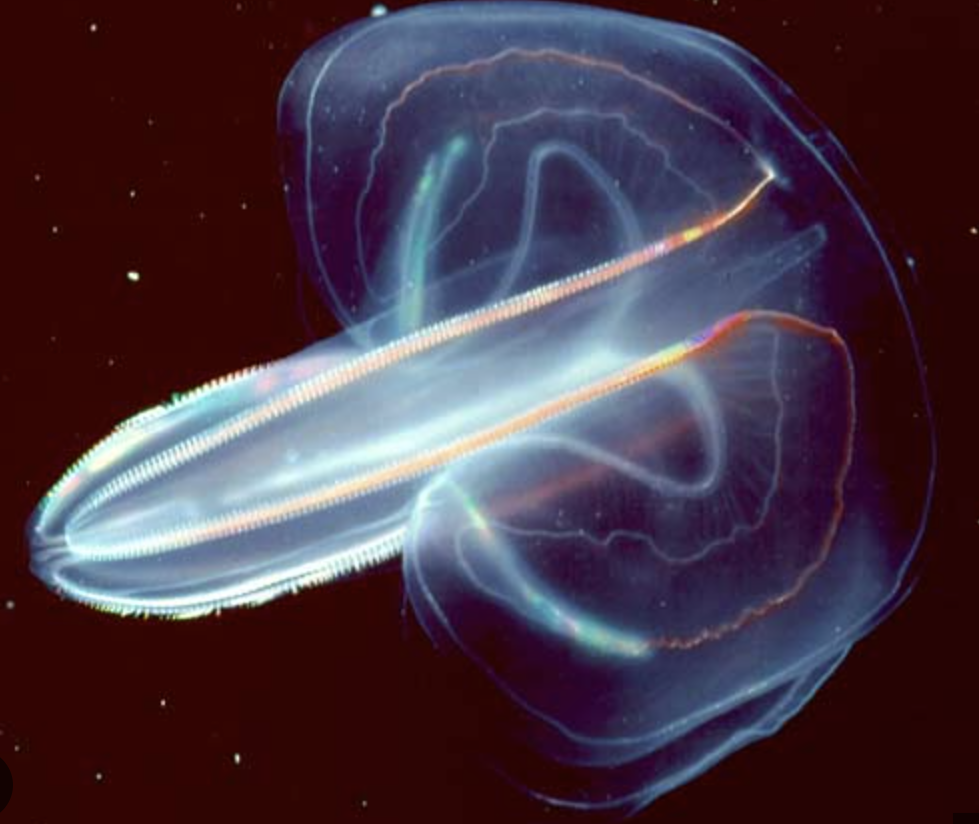
29
New cards
Phylum that has a simple body plan, radial symmetry, and a central digestive system is known as ___
Cnidaria
Gnathostome
Ctenophora
Lophotrochozoa
Cnidaria
Gnathostome
Ctenophora
Lophotrochozoa
Cnidaria
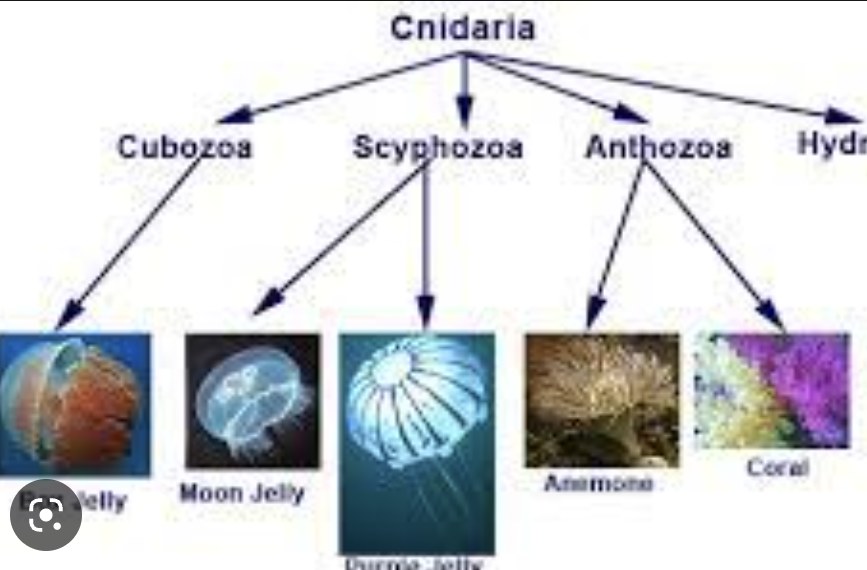
30
New cards
Animals that are ____, are sessile (immobile)
* bilateral
* radial
* circular
* large
* bilateral
* radial
* circular
* large
radial
31
New cards
Ectoderm, Mesoderm, and Endoderm
Ectoderm: Outer covering of the skin (epidermis), nervous system
\
Mesoderm: Muscles, dermis, blood vessels, bone, other organs
\
Endoderm: Lining of the digestive and respiratory tract, pancreas, liver
\
Mesoderm: Muscles, dermis, blood vessels, bone, other organs
\
Endoderm: Lining of the digestive and respiratory tract, pancreas, liver
32
New cards
An animal has a body cavity with space between the digestive tract and the outer body wall, formed from the mesoderm
What type of cavity is it?
Coelomate
Triploblastic
Acoelomate
Radial
What type of cavity is it?
Coelomate
Triploblastic
Acoelomate
Radial
Coelomate
33
New cards
An animal has a cavity that is formed from the mesoderm and endoderm, fluid-filled separating the gut of the organism from the body wall
what type of cavity is it?
\
Placenta
Acoelomate
Coelomate
Pseudocoelomate
\
what type of cavity is it?
\
Placenta
Acoelomate
Coelomate
Pseudocoelomate
\
Pseudocoelomate
34
New cards
Segmented worms, such as an earthworm, is a(n)____, which is also known as a coelomate
\
Mollusc
Annelid
Acoelomate
Deuterostome
\
Mollusc
Annelid
Acoelomate
Deuterostome
Annelid
35
New cards
Animals are ___
Only Heterotrophs
Only Phototrophs
Only Diploblastic
Only Autotrophs
\
Only Heterotrophs
Only Phototrophs
Only Diploblastic
Only Autotrophs
\
Only Heterotrophs
36
New cards
During development, Echinoderm’s (starfish and urchins) and chordates’ first opening becomes the anus, and the mouth forms later.
What term would match this description?
\
Metamorphosis
Deuterostomia
Bilateria
Arthropods
What term would match this description?
\
Metamorphosis
Deuterostomia
Bilateria
Arthropods
Deuterostomia
37
New cards
A phylum of invertebrates that are characterized by periodic molting of their exoskeleton, including arthropods, nematodes, and tardigrades
Gnathostomes
Ecdysozoa
Deuterostomes
Cephalochordates
Gnathostomes
Ecdysozoa
Deuterostomes
Cephalochordates
Ecdysozoa
38
New cards
What would be a correct statement regarding how bugs got their wings?
\
Acquisition of new genes
The need to fly to get away from predators
As a way of producing heat
Small changes in regulatory sequences over time
\
Acquisition of new genes
The need to fly to get away from predators
As a way of producing heat
Small changes in regulatory sequences over time
Small changes in regulatory sequences over time
39
New cards
Grasshoppers’ life stages include egg, nymph, and adult, which would classify their metamorphosis as ___
Complete
Ubiquitous
Incomplete
Complete
Ubiquitous
Incomplete
Incomplete
40
New cards
Flies’ life stages include egg, larva, pupa, and adult, which would classify their metamorphosis as ___
Complete
Ubiquitous
Incomplete
Complete
Ubiquitous
Incomplete
Complete
41
New cards
Chordates have huge differences in size and body mass. Despite their diversity, they all have shared derived traits that relate them all together
Which characteristics do Chordates possess?
* Bilaterally symmetrical
* Deuterostome
* notochord
* segmented bodies
\
Which characteristics do Chordates possess?
* Bilaterally symmetrical
* Deuterostome
* notochord
* segmented bodies
\
Trick question it’s ALL OF THEM
42
New cards
Notochord’s job is to
\
* Provide firm yet flexible skeletal support
* forms the central nervous system
* help with suspension feeding
* Provide rigid structure
\
* Provide firm yet flexible skeletal support
* forms the central nervous system
* help with suspension feeding
* Provide rigid structure
Provide firm yet flexible skeletal support
43
New cards
Lampreys, who are an example of the vertebrate Petromyzontida, are parasites of fish as adults and suspension feeders as larvae
What subphylum would Lampreys fall into
* Gnathostomes
* Jawless vertebrates
* Chondrichthyes
\
What subphylum would Lampreys fall into
* Gnathostomes
* Jawless vertebrates
* Chondrichthyes
\
Jawless vertebrates
44
New cards
Gnathostomes have hard, mineralized structures. __ are/is a shared derived character of Gnathostomes
* Jaws
* Hair
* Limbs
* Ribs
* Jaws
* Hair
* Limbs
* Ribs
Jaws
45
New cards
There are two clades under the Gnathostome phylum. ( ) Which are cartilage fish, and ( ) which are bony fish
* Chondrichthyes, osteichthyes
* Amphibians, Osteichthyes
* Tetrapods, Lobefins
* Chondrichthyes, gnathostomes
\
\
* Chondrichthyes, osteichthyes
* Amphibians, Osteichthyes
* Tetrapods, Lobefins
* Chondrichthyes, gnathostomes
\
\
Chondrichthyes, osteichthyes
46
New cards
A fish has rod-shaped bones surrounded by a thick layer of muscle in its fins.
What term would match this characteristic?
* Actinopterygii
* Osteichthyes
* Lobe fin
* Tiktaalik
\
What term would match this characteristic?
* Actinopterygii
* Osteichthyes
* Lobe fin
* Tiktaalik
\
Lobe fins
47
New cards
An animal with a large forebrain, and lateral line system, has some mineralization but is mostly made of cartilage, and is a carnivore would be considered a _
* Chondrichthyes
* Osteichthyes
* Lobe fin
* Actinopterygii
* Chondrichthyes
* Osteichthyes
* Lobe fin
* Actinopterygii
Chondrichthyes
48
New cards
An animal that is a basal tetrapod, metamorphosis, and lives in damp habitats is known as
\
* Lobefins
* Amphibians
* Amniotes
\
\
* Lobefins
* Amphibians
* Amniotes
\
Amphibians
49
New cards
The Amnion and Amniotic cavity with amniotic fluid does what for the embryo
\
* gas exchange
* is a source of nutrients
* protects the embryo from mechanical shock
* Collects waste
\
* gas exchange
* is a source of nutrients
* protects the embryo from mechanical shock
* Collects waste
Protects the embryo from mechanical shock
50
New cards
What is the function of the allantois in embryonic development?
Collection of metabolic waste
Respiration of gas exchange
Protects the embryo from mechanical shock
1st and second choice
1st and third choice
All choices
\
Collection of metabolic waste
Respiration of gas exchange
Protects the embryo from mechanical shock
1st and second choice
1st and third choice
All choices
\
What is the function of the allantois in embryonic development?
1st and second choice
1st and second choice
51
New cards
Are snakes Tetrapods?
Yes
No
Yes
No
Yes
52
New cards
A dinosaur that is a herbivore and has more defense adaptations is considered a
\
Saurischians
Ornithischians
Theropods
Long-neck
\
Saurischians
Ornithischians
Theropods
Long-neck
Ornithischians
53
New cards
What classifies a Saurischians dinosaur
* Fast moving
* slow
* long necks
* herbivores
* 1st and 3rd options
* none
* Fast moving
* slow
* long necks
* herbivores
* 1st and 3rd options
* none
1st and 3rd
54
New cards
The process of some dinosaurs evolving to have flight over time is an example of
* Genetic drift
* Metamorphosis
* gene flow
* bottleneck effect
\
\
* Genetic drift
* Metamorphosis
* gene flow
* bottleneck effect
\
\
Genetic drift
55
New cards
Theropod dinosaurs are:
\
* hollow-boned, bipedal birds
* Saurischians
* Endothermic
* extant dinosaurs
* All of them
* None
\
* hollow-boned, bipedal birds
* Saurischians
* Endothermic
* extant dinosaurs
* All of them
* None
All of them
56
New cards
An animal with a skull with an opening behind each eye and differentiated teeth is a
* Synapsid
* reptile
* amphibian
* gnathostome
* Synapsid
* reptile
* amphibian
* gnathostome
Synapsid
57
New cards
A lancelet is a suspension feeder that exhibits all four key-derived characters of a chordate
What Clade does the lancelet belong to?
* Urochordata
* Myxini
* Cephalochordates
* Dipnoi
What Clade does the lancelet belong to?
* Urochordata
* Myxini
* Cephalochordates
* Dipnoi
Cephalochordates
58
New cards
Tunicates have soft, sac-like bodies. They are sessile filter feeders.
What clade do they belong to?
* Urochordata
* Myxini
* Petromyzontidae
* Monotremes
What clade do they belong to?
* Urochordata
* Myxini
* Petromyzontidae
* Monotremes
Urochordata
59
New cards
An animal that does not exhibit hinged jaws, but is a vertebrate, could be considered to be in either of what two clades?
* Dipnoi, Petromyzontida
* Cephalochordates, Myxini
* Myxini, Petromyzontida
* Eutherians, Actinistia
* Dipnoi, Petromyzontida
* Cephalochordates, Myxini
* Myxini, Petromyzontida
* Eutherians, Actinistia
Myxini, Petromyzontida
60
New cards
A shark would be considered a Chondrichthyes due to its:
* gills
* jagged teeth
* Sandpaper-like skin
* Cartilaginous skeleton
* gills
* jagged teeth
* Sandpaper-like skin
* Cartilaginous skeleton
Cartilaginous skeleton
61
New cards
An animal that is an aquatic gnathostome and is ray-finned would be considered a:
* Actinopterygii
* Dipnoi
* Chondrichthyes
* Actinistia
* Actinopterygii
* Dipnoi
* Chondrichthyes
* Actinistia
Actinopterygii
62
New cards
A Coelacanth was thought to be an extinct species of fish that had lobe fins until it was discovered to still be thriving in the Indian ocean.
What clade does it belong to?
* Actinistia
* Dipnoi
* Amphibia
* Myxini
What clade does it belong to?
* Actinistia
* Dipnoi
* Amphibia
* Myxini
Actinistia
63
New cards
A freshwater lobe fin that possesses both lungs and gills would be considered a:
\
Amphibian
Myxini
actinistia
Dipnoi
\
Amphibian
Myxini
actinistia
Dipnoi
Dipnoi
64
New cards
Mammals evolved from _ ?
* Synapsids
* Reptiles
* Apes
* Fish
* Synapsids
* Reptiles
* Apes
* Fish
Synapsids
65
New cards
How do Monotremes give birth?
* Live birth
* Lay eggs
* Live birth
* Lay eggs
Lay eggs
66
New cards
This period gave rise to a large group of many now-extinct, soft-bodied organisms except for sponges and cnidarians.
\
* Ediacaran Fauna
* Cretaceous Era
* Cambrian Explosion
* Silurian
\
* Ediacaran Fauna
* Cretaceous Era
* Cambrian Explosion
* Silurian
Ediacaran Fauna
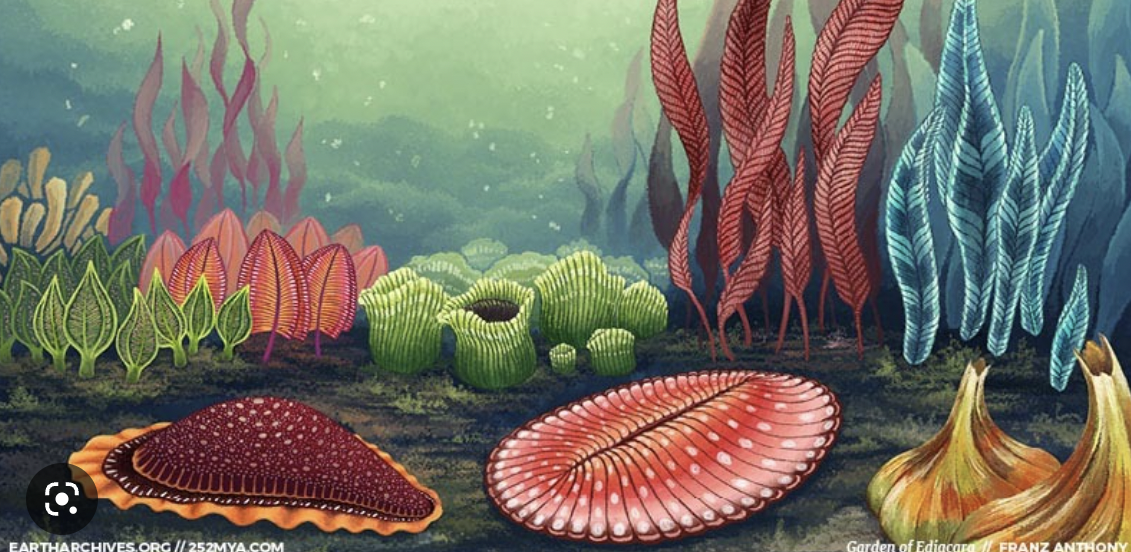
67
New cards
The term Eumetazoa means…
* Animals with hard exoskeletons
* Animals that give live birth
* Animals that don’t possess hinged jaws
* Animals with true tissues
* Animals with hard exoskeletons
* Animals that give live birth
* Animals that don’t possess hinged jaws
* Animals with true tissues
Animals with true tissues
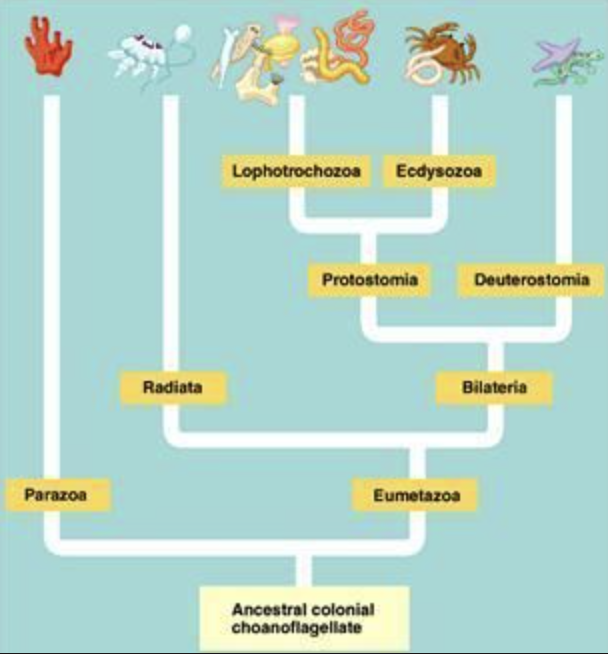
68
New cards
An advantage of metamorphosis would be
* Larvas have low mobility
* Adults and larvae have different diets
* Metamorphosis takes energy
* Adults are less vulnerable than larvae
* Larvas have low mobility
* Adults and larvae have different diets
* Metamorphosis takes energy
* Adults are less vulnerable than larvae
Adults and larvae have different diets
69
New cards
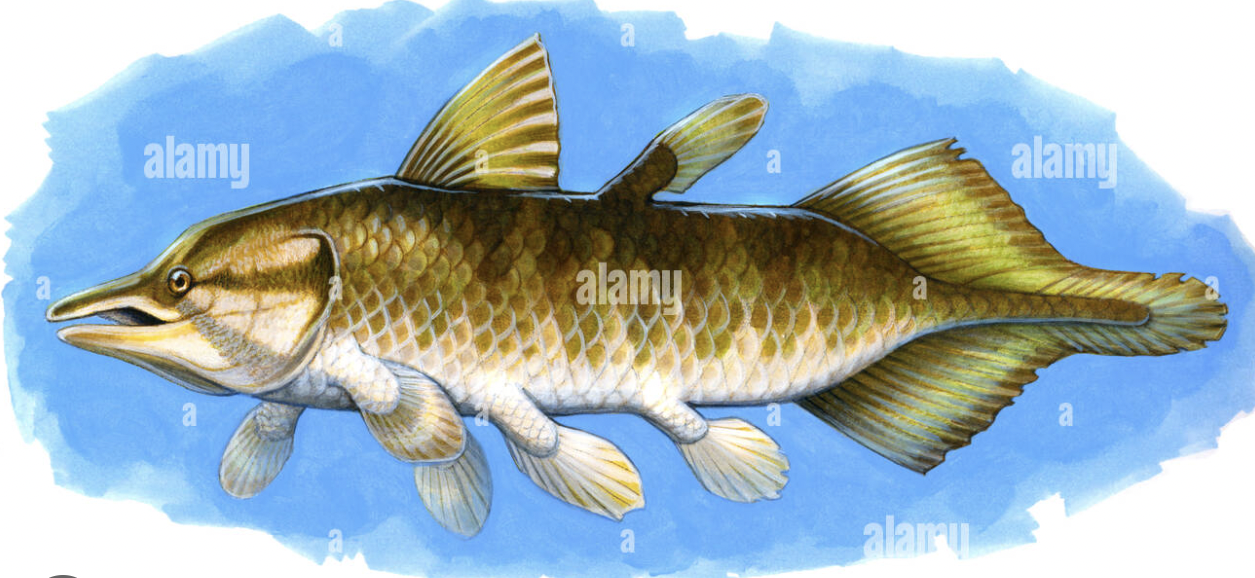
What does this image portray?
* Actinistia (lobe-fin)
* Dipnoi
* Actinopterygii (ray-fin)
* Caudal fin
* Actinistia (lobe-fin)
* Dipnoi
* Actinopterygii (ray-fin)
* Caudal fin
Actinistia
70
New cards
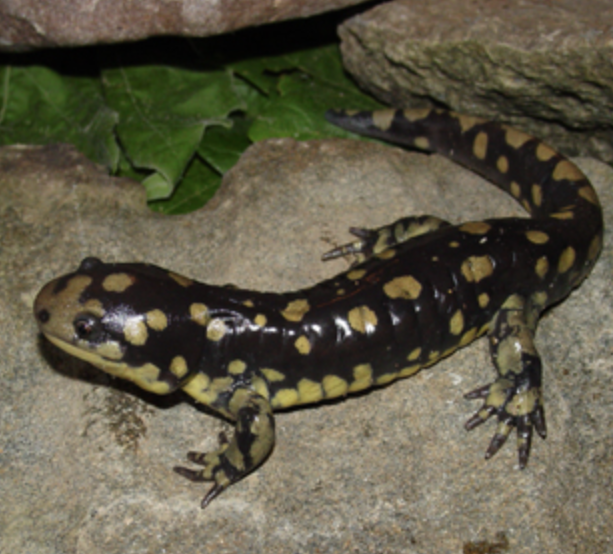
What does this image portray?
* reptile
* amphibian
* lobefin
* cnidarian
* reptile
* amphibian
* lobefin
* cnidarian
Amphibian
71
New cards
Ectotherms differ from Endotherms in the fact that they gather warmth almost exclusively ____
* From metabolism
* By shivering
* From outside sources
* by actively moving
* From metabolism
* By shivering
* From outside sources
* by actively moving
From outside sources
72
New cards
Choose the MOST correct answer
The extinction of most dinosaurs is an example of
* Founder effect
* Bottleneck effect
* Gene flow
* Speciation
The extinction of most dinosaurs is an example of
* Founder effect
* Bottleneck effect
* Gene flow
* Speciation
Bottleneck effect
73
New cards